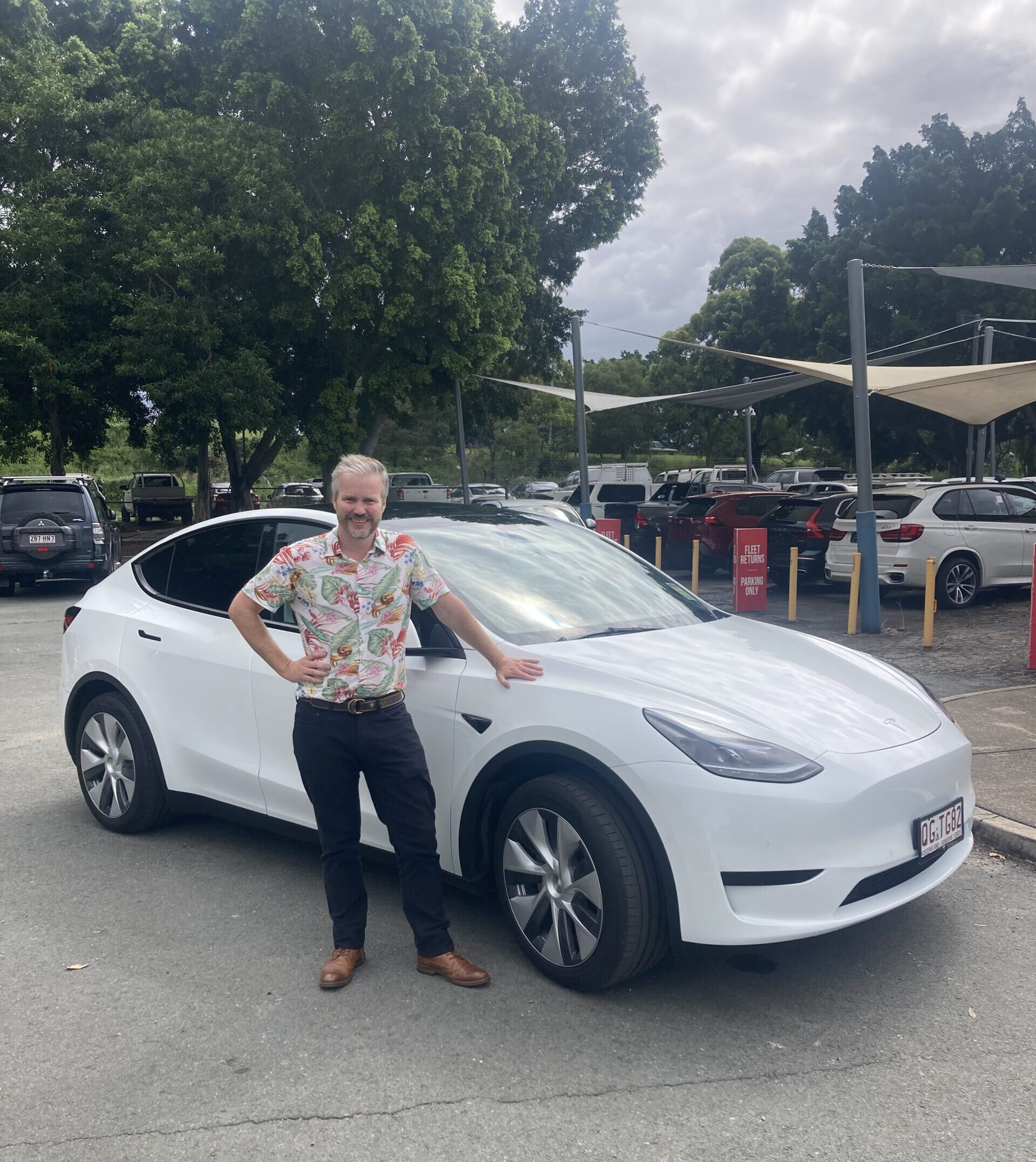Sign up for daily news updates from CleanTechnica on email. Or follow us on Google News!
The Bureau of Land Management’s updated Western Solar Plan will guide solar energy siting and development across 11 western states for the next decade.

A foundation for smart siting of solar power on federal public lands
Today’s publication of the Bureau of Land Management’s (BLM) Final Programmatic Environmental Impact Statement (FPEIS) for solar energy development represents a new chapter in renewable energy development on federal public lands. With the FPEIS, the BLM has built on the success of the 2012 Western Solar Plan—under which ~40 new solar projects with generating capacity of 9 GW were permitted through 2022—to lay the foundations for federally managed lands to play an important role in responsibly accelerating the clean energy transition.
In 2012, the BLM published planning documents to support the siting and development of utility scale solar projects across six western states. The plan introduced the concept of “Solar Energy Zones” designed to proactively direct and incentivize development to areas the agency felt best suited for energy production and avoidance of resource conflicts. The same document also introduced the “variance area” concept, which created a more flexible approach for developers to submit proposals for development on nearly 19 million acres (about the area of South Carolina) of lands outside of dedicated zones. And finally, the plan mapped “exclusion areas,” or federal lands where certain types of resource conflicts (like endangered species habitat or lands with wilderness characteristics) meant that development was inappropriate or especially harmful.
The 2024 update represents a shift focused on accelerating the clean energy transition by incorporating lessons learned from the implementation of the original 2012 solar plan. By adopting meaningful siting and development efficiencies while maintaining a focus on minimizing environmental impacts, the 2024 plan lays the groundwork for accelerating solar development that also maintains core environmental siting and land management safeguards.
Gone are new “Solar Energy Zones” and the “variance areas” that defined the 2012 plan, replaced by a single land designation now known as “solar application areas.” In turn, the identification of these areas is now predicated primarily on their proximity to existing and planned transmission corridors—a key innovation in the BLM’s approach meant to ensure lands open to project applications correspond to the places where it is economical to build solar projects and connect them to the grid. These areas close to transmission are then refined further by the application of 21 exclusion criteria meant to protect environmental and other resources, ranging from endangered species to wildlands to big game to visual resources. In this final proposed plan, the BLM has added a new element of flexibility that could allow developers to select sites more than 15 miles away from existing and planned transmissions corridors. However, this will only be allowed where that land has been identified as “disturbed” via initial BLM mapping, with further requirements for developers to validate its “disturbed” status during the site selection and permit application process.
In all, the proposed final plan allows more than 31 million acres of land across the 11 western states to be considered for possible solar development, with more than 75 percent of these lands identified in Nevada, Utah, New Mexico, and Wyoming. Despite that somewhat eye-popping acreage, it’s important to note that the BLM’s development scenarios — calculations that are based on Department of Energy modeling — only anticipate a maximum of around 700,000 acres (about half the area of Delaware) needed for solar development through 2045. That amounts to less than two percent of the 31 million acres being contemplated for project applications. Rather, having a large portion of lands available for development affords the BLM maximize siting flexibility. This approach will help facilitate the potential development of more than 136 GW of electric generating capacity, or enough to power more than 100 million homes.
But aside from seeking to narrow down available acreage to those areas with good development potential and fewer ecological and land use conflicts, the final proposed plan will use a suite of updated “programmatic design features” to help refine the way projects are sited, built, operated, and eventually decommissioned and reclaimed. In the final proposal, the BLM has significantly improved these design features by streamlining and categorizing them into three buckets: (1) those that apply to every project, (2) those that apply if specific resources are present or impacted; and (3) those that may apply on a project-by-project basis. As the BLM explains in the FPEIS, design features are included to, for example, “modify[] a project area to avoid habitat or cultural resources.” Ideally, these features will help developers avoid additional environmental, cultural, and other potential harms and provide the conservation community with the tools it needs to work with the BLM and solar companies to ensure projects are built in the lowest conflict areas possible.

How to improve on the updated plan’s broad foundation?
While creating flexibility and increasing the economic viability of building solar power on federal lands are critical elements of the clean energy transition, the 2024 Updated Western Solar Plan isn’t perfect. Two elements in particular leave space for the BLM to further refine how effective the plan is for accelerating new development while simultaneously enhancing its ability to avoid harms to the broad range of resources located across the 11 states in the planning area.
First, while the 21 “exclusion criteria” represent a critical screen that keeps millions of acres off limits to solar development, the data underlying the criteria is, in some instances, lacking. In comments responding to the draft PEIS, environmental organizations from across the country pointed out specific concerns where the BLM proposed relying on outdated resource surveys, outdated resource management plans, and other incomplete data inputs to map or define included exclusion criteria. Unfortunately, in most cases, the BLM appears to not have considered approaches that would have allowed for updated information to be considered during the landscape level application of exclusion criteria. In practice, this will mean that application of newer and more granular data will take place at the project level, a process that may slow down the permitting of projects as they move forward under the updated plan.
The BLM, fortunately, has additional regulatory authorities that may help it overcome the inefficiencies created by relying on old data. This gets to the second major element of the updated plan that can be improved moving forward (even if the plan itself is finalized as is). This second area of improvement has to do with utilizing the BLM’s process for identifying “designated leasing areas” (DLA), which are essentially the “solar energy zones” that the agency chose not to refresh in the updated plan. Utilizing the DLA designation process, the BLM can apply a heightened level of scrutiny to the broad acreage it has opened to identify the areas on disturbed land and/or close to existing transmission that represent the very best, low conflict areas for building new solar projects. The benefit of taking this next step is that these areas should result in significant permitting efficiencies due to the pre-application of resource conflict screens before a project is even proposed in the area.
The finalization of the updated Western Solar Plan is a big step forward for the BLM and responsible renewable energy development on federal public lands. It creates the guidelines needed to access some of the country’s most significant solar resources and balances industry’s desire for flexibility with the BLM’s mission of conserving our shared natural resources. We look forward to working with the agency, solar developers, and Congress to continue pushing for the policies needed to truly balance efficient resource development with critical conservation, all while accelerating progress toward a clean energy future.
By Josh Axelrod, courtesy of NRDC.
Featured image courtesy of BLM.
Have a tip for CleanTechnica? Want to advertise? Want to suggest a guest for our CleanTech Talk podcast? Contact us here.
Latest CleanTechnica.TV Videos
CleanTechnica uses affiliate links. See our policy here.
CleanTechnica’s Comment Policy





